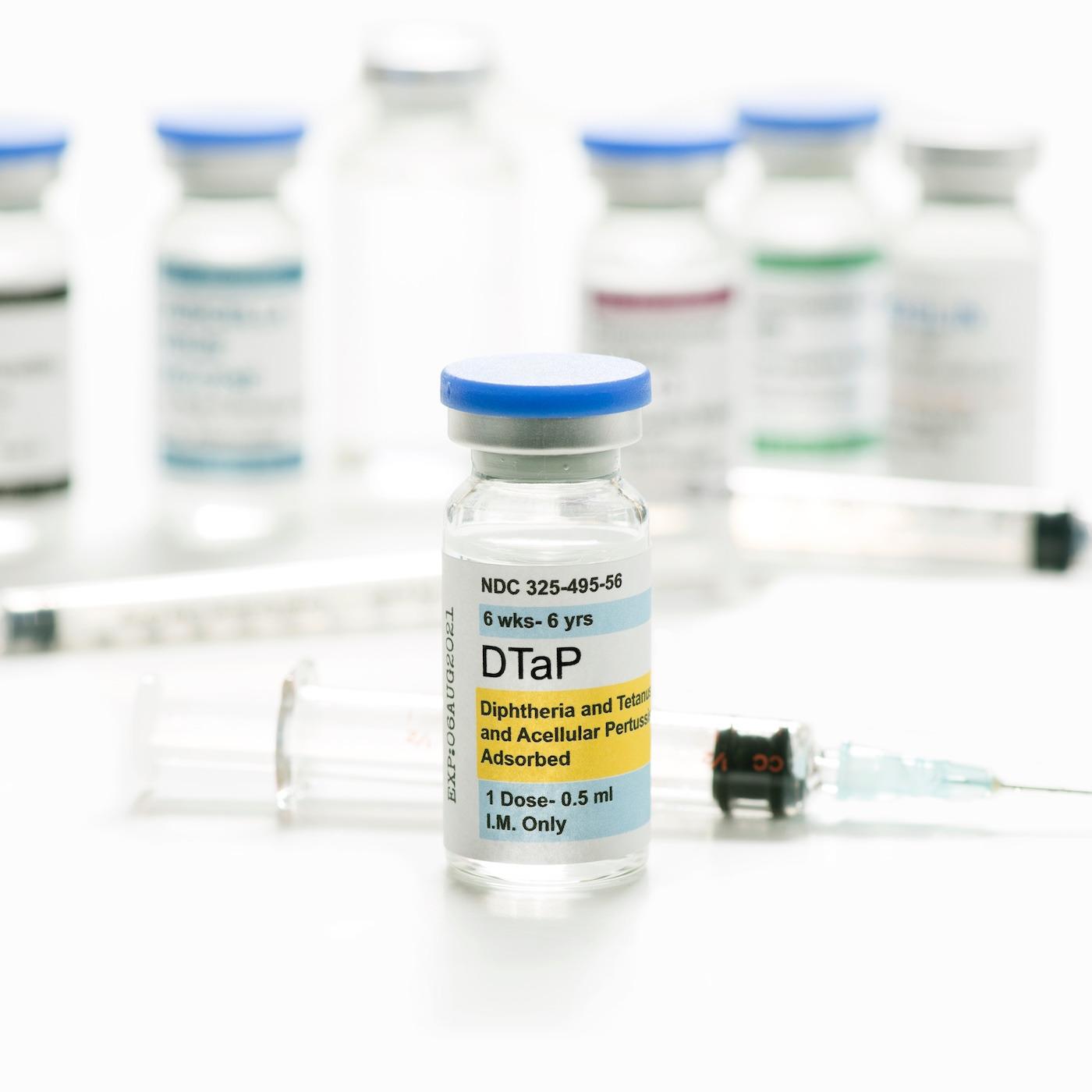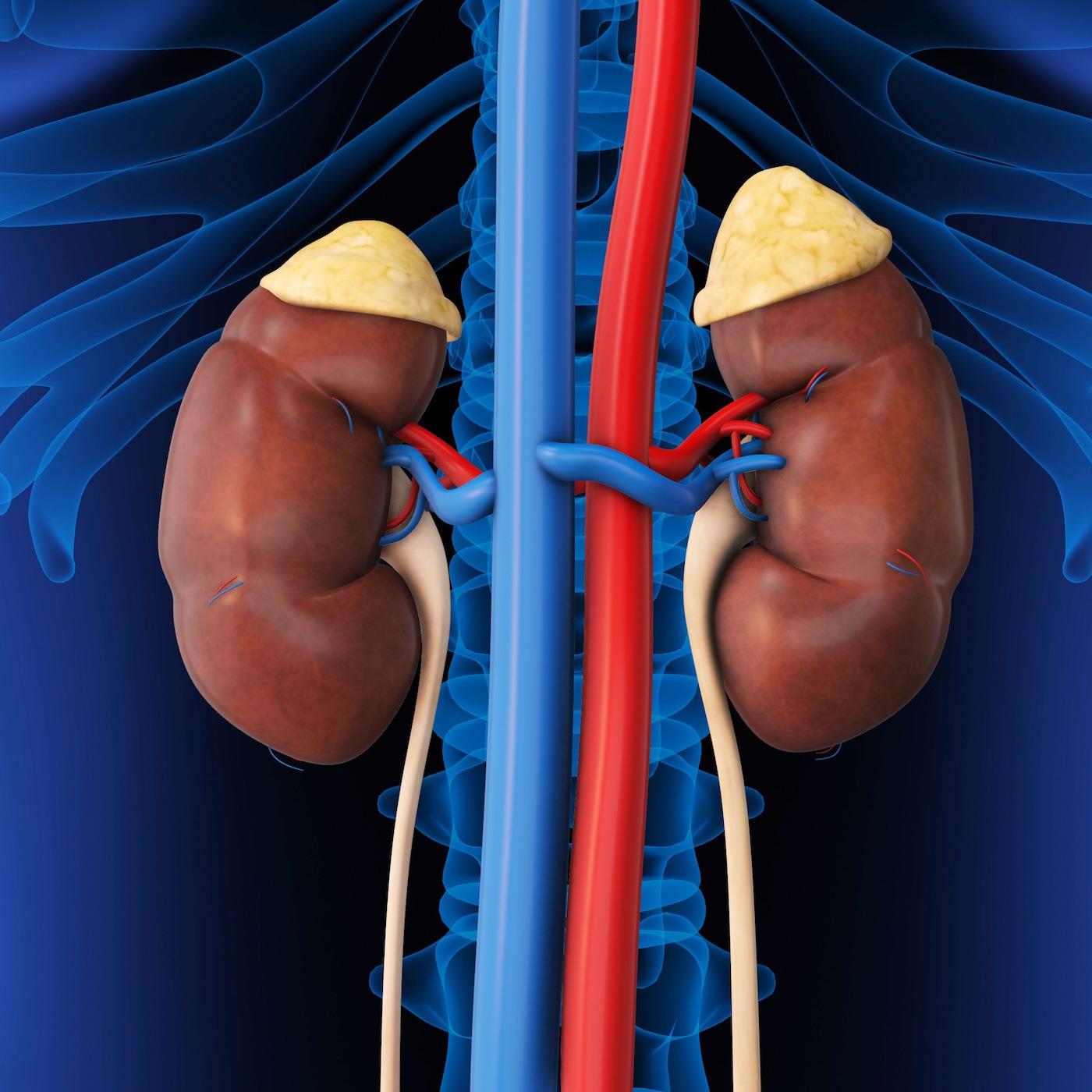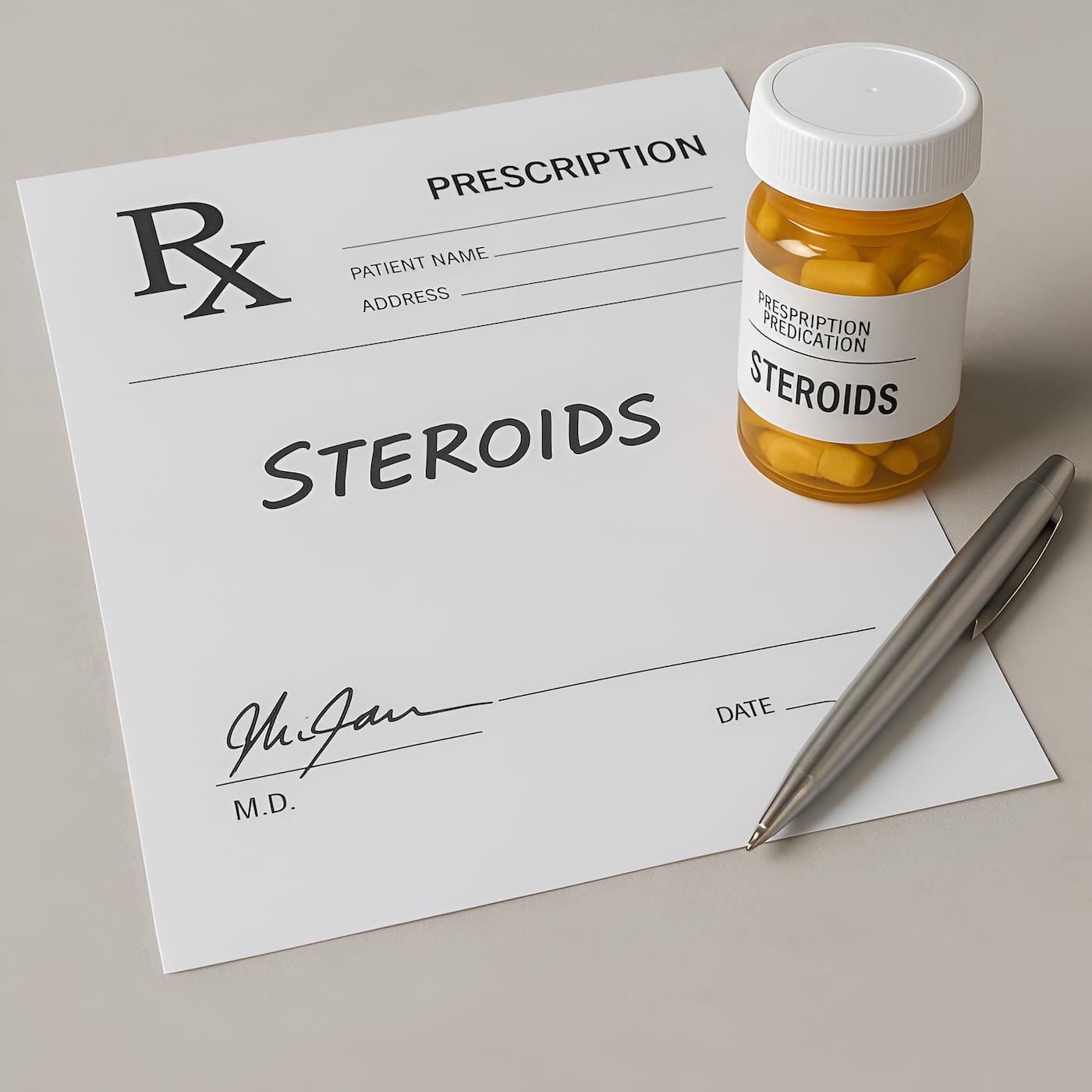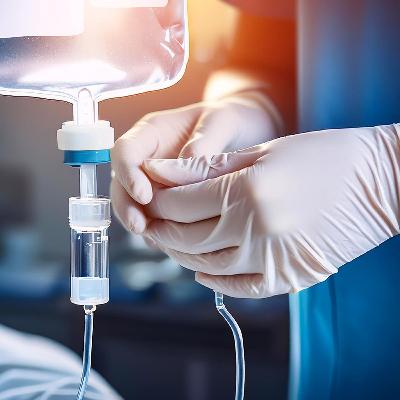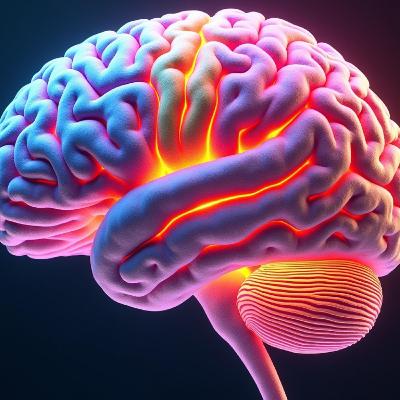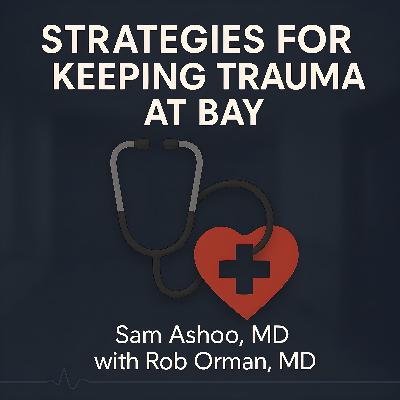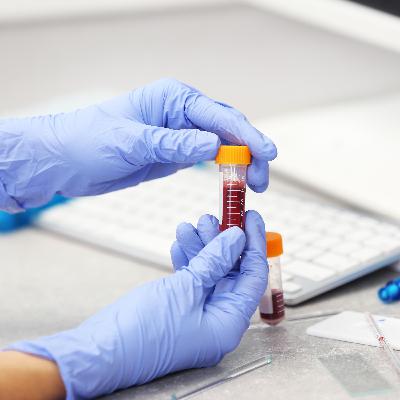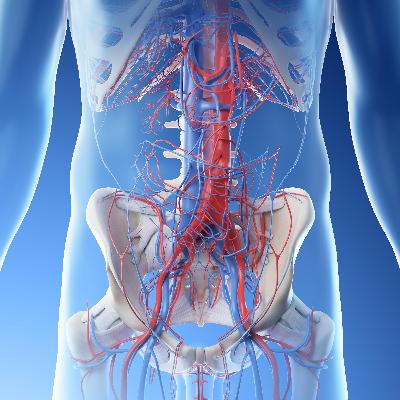Discover EMplify by EB Medicine
EMplify by EB Medicine

EMplify by EB Medicine
Author: EB Medicine
Subscribed: 1,249Played: 6,691Subscribe
Share
© Copyright 2025 EMplify by EB Medicine
Description
Take a deeper dive into our peer-reviewed emergency medicine content with the EMplify podcast. Join hosts Sam Ashoo, MD and T.R. Eckler, MD for educational, conversational reviews of current evidence guaranteed to help you make your best clinical decisions. Each high-yield episode gives you practical, time-tested guidance from practicing emergency medicine clinicians and subject-matter experts. Listen and learn!
143 Episodes
Reverse
In this episode, Sam Ashoo, MD and T.R. Eckler, MD discuss the November 2025 Emergency Medicine Practice article, Diagnosis and Management of Emergency Department Patients With Alcohol Withdrawal SyndromeEpidemiology & Background Rising ED visits related to alcohol use. Mortality rates and spectrum of patient presentations. Importance of high suspicion and complexity of cases.Pathophysiology & Mechanisms Alcohol metabolism and neurochemical changes. Differential diagnosis: Conditions that mimic alcohol withdrawal.Prehospital & EMS Considerations Role of EMS in triage and initial management. Use of sobering centers vs. ED transport. Prehospital administration of benzodiazepines (IM midazolam).History & Risk Assessment Key questions to assess risk for alcohol withdrawal syndrome. Importance of patient history, medication use, and comorbidities. Discussion on patient honesty and rapport.Physical Exam & Scoring Systems DSM-5 criteria for alcohol withdrawal. Use of CIWA-AR, BAWS, and PAWSS scoring systems. Importance of objective measurement for monitoring and disposition.Complications & Special PresentationsComplicated alcohol withdrawal: Hallucinosis, seizures, delirium tremens. Diagnostic workup: Labs, imaging, and co-ingestions. Special populations: End-stage liver disease, pregnancy, intubated patients.Treatment Strategies Mainstay: Benzodiazepines (types, dosing, and protocols). Phenobarbital: Indications, dosing, and evidence. Adjunctive therapies: Thiamine, glucose, magnesium. Alternative/adjunct medications: Gabapentin, ketamine, dexmedetomidine, baclofen.Clinical Pearls & Practice Changes Early, aggressive therapy to prevent complications. Symptom-based vs. fixed-schedule treatment. Gabapentin as an alternative or adjunct. Anti-craving medications for relapse prevention.Disposition & Protocols Use of scoring systems for safe discharge, observation, or admission. Importance of protocolized approaches and community resources.Summary & Take-Home Points Five key practice-changing points. Clinical pathway.Emergency Medicine Residents, get your free subscription by writing resident@ebmedicine.net
In this episode, Sam Ashoo, MD and Lara Zibners, MD discuss the August 2025 Pediatric Emergency Medicine Practice article, Diphtheria, Pertussis, and Tetanus: An Update of Evidence-Based Management of Pediatric Patients in the Emergency Department Introduction and guest backgroundHost welcome, show contextDr. Lara Zibners’ credentialsEB Medicine involvementPersonal stories and clinical experienceMemorable tetanus and pertussis casesVaccine advocacyRare disease encountersDiphtheria: overview, presentation, treatmentToxigenic vs. non-toxigenic, “bull neck”Cardiac, neurologic complicationsAntitoxin, antibiotics, public healthPertussis: symptoms, vaccine, treatment“100-day cough,” apnea in infantsWaning immunity, boostersAzithromycin, treat contactsTetanus: risk, presentation, managementClostridium ubiquity, no outbreaksMuscle spasms, autonomic instabilityAirway, sedation, antibioticsKey ED takeaways and pearlsEarly suspicion, isolationICU admission for severe casesVaccination, reportingResources and article summaryAppendix, clinical pathwayebmedicine.net referenceCME, further readingGuest’s podcast plug and closing remarks“Unstable Vitals” podcastWhere to listenThank you, sign-offCheck out Dr Zibner's podcast Unstable VitalsEmergency Medicine Residents, get your free subscription by writing resident@ebmedicine.net
In this episode, Sam Ashoo, MD and T.R. Eckler, MD discuss the October 2025 Emergency Medicine Practice article, Emergency Department Evaluation and Management of Patients With Adrenal InsufficiencyIntroductionWelcome and host introductionsBrief overview of the episode’s topicResources and CME reminderArticle OverviewSource: Emergency Medicine Practice, October 2025Authors: The SimcoesImportance of evidence-based reviewClinical Context & EpidemiologyFrequency and rarity of adrenal insufficiencyDiagnostic challenges and statisticsImportance of recognizing adrenal crisisPathophysiologyPrimary, secondary, and tertiary adrenal insufficiencyCauses and mechanismsKey anatomical and physiological conceptsDifferential DiagnosisOverlap with other diseases (infections, autoimmune, endocrine, psychiatric, cardiac, GI, etc.)Importance of considering adrenal crisis in complex casesPrehospital CareEMS recognition and limitationsImportance of medication history and emergency kitsLegal and logistical barriers to prehospital hydrocortisoneEmergency Department EvaluationRecognizing symptoms and prioritizing careRole of EMR and clinical decision supportKey history and risk factors (medications, steroid use, opioid use, comorbidities)Physical ExaminationSpecific and nonspecific findingsCushingoid features vs. primary adrenal insufficiency signsDiagnostic WorkupLaboratory studies (cortisol, ACTH, renin, aldosterone, TSH, etc.)Imaging considerationsGold standard tests and their limitations in the EDTreatmentImmediate administration of hydrocortisoneDosing for adults and pediatricsSupportive care (fluids, glucose, treating underlying cause)Sick day dosing and home managementSpecial PopulationsPregnancy considerationsSeptic shock and adrenal crisisCommon Pitfalls & TakeawaysDelaying steroids for labs/diagnosisImportance of high suspicion and early treatmentKey trivia and learning pointsClosingSummary and final thoughtsReminders for further reading and CMEFarewell and next episode teaserEmergency Medicine Residents, get your free subscription by writing resident@ebmedicine.net
In this episode, Sam Ashoo, MD interviews Evan Dvorin, MD about the dangers of short term steroid use.Background & Regional DifferencesDr. Dvorin’s clinical journey from New England to New Orleans. Noticing increased use of corticosteroids for common conditions in the Southeast. Discussion of how steroid prescribing practices vary by region and setting.Inappropriate Steroid UseCommon conditions where steroids are often inappropriately prescribed (sinus infections, bronchitis, sciatica, rashes, plantar fasciitis, etc.). Trends showing increased steroid prescribing over time. Similar patterns observed in emergency, urgent care, and primary care settings.Risks and Side Effects of Short-Term Steroid UseShort-term steroids can cause significant side effects: infection, sepsis, bone fractures, thromboembolism, psychiatric effects, hyperglycemia. Dose-response relationship: higher doses and repeated use increase risks. Some side effects (e.g., bone loss) may persist beyond two months.Patient Communication & Shared Decision-MakingImportance of discussing risks with patients, tailored to individual risk factors (e.g., diabetes, psychiatric history, age). Strategies for educating patients and managing expectations. The role of patient education videos and resources.Impact of Provider Education & Quality MetricsOchsner Health’s initiatives to reduce inappropriate steroid use. Use of CME, quality dashboards, and feedback to clinicians. Evidence that education and reporting can reduce unnecessary prescriptions.Special Populations & ScenariosConsiderations for pediatric patients and repeated dosing. Challenges when specialists recommend steroids for certain conditions (e.g., sciatica, neurosurgery cases). The need for evidence-based practice and inter-provider communication.Medical-Legal ConsiderationsLawsuits related to steroid side effects (e.g., fat atrophy, infection). Importance of documentation and informed consent.Alternatives & Symptom ManagementFocusing on treating the patient’s most bothersome symptoms. Non-steroid options and the value of patient education about illness duration and expectations.ResourcesMention of Dr. Dvorin’s educational video on corticosteroid side effects (available on YouTube). Reminder of EB Medicine’s journals and resources for further learning.ConclusionKey takeaway: “Do no harm” and practice evidence-based medicine. Encouragement for clinicians to review their prescribing habits and educate patients.Ochsner "Side effects from corticosteroids" Video: https://www.youtube.com/watch?v=PdMJ9HYxkck
In this episode, Sam Ashoo, MD and T.R. Eckler, MD discuss the September 2025 Emergency Medicine Practice article, Emergency Department Management of Patients With Status Epilepticus Topic IntroductionFocus: Status Epilepticus in AdultsReference to recent pediatric episodeArticle authors: Dr. Marquez, Dr. Kaur, Dr. LayWhy Status Epilepticus MattersTeaching value and clinical challengeTeam-based care and multidisciplinary involvementGuidelines and EvidenceReview of major guidelines (International League Against Epilepsy, Neurocritical Care Society, American Epilepsy Society)Key trials: EcLiPSE, ConSEPT, ESETTUpdated definition of status epilepticusClassification and DiagnosisConvulsive vs. non-convulsive statusImportance of repeated neurologic examsDiagnostic challenges and mimics (e.g., syncope, psychogenic seizures)Etiology and WorkupAcute vs. non-acute causesCommon triggers: medication noncompliance, metabolic issues, infections, traumaImportance of sleep patterns and ammonia levelsThe NORSE acronym (new onset refractory status epilepticus)Prehospital and ED ManagementAirway, breathing, circulation prioritiesEarly pharmacologic intervention (IM midazolam preferred in prehospital)Gathering history and medication informationPositioning and airway protectionDiagnosticsLaboratory workup: glucose, CBC, metabolic panel, drug levels, pregnancy testImaging: non-contrast CT, MRI, ultrasound, lumbar punctureEEG: spot vs. continuous monitoringTreatment ApproachFirst-line: Benzodiazepines (lorazepam, midazolam)Second-line: Levetiracetam, valproate, fosphenytoin, phenobarbital, lacosamideThird-line: Continuous infusions (midazolam, propofol, pentobarbital, thiopental, ketamine)Dosing pearls and importance of rapid escalationSpecial PopulationsPregnancy (eclampsia: magnesium as first-line)Substance-induced status epilepticus (e.g., isoniazid toxicity and pyridoxine)Brief mention of pediatric management and the PD stat appRisk Management PitfallsNon-convulsive status is common and easily missedImportance of weight-based dosingNeed for formal EEG in ambiguous casesDon’t assume non-adherence is the only cause in known epilepticsAlways consider higher level of care for status patientsClinical PathwayStepwise approach to medication and escalationEmphasis on having a pathway/checklist for these high-stress casesConclusionRecap of key pointsThanks to authors and listenersReminder to visit ebmedicine.net for CME and resourcesEmergency Medicine Residents, get your free subscription by writing resident@ebmedicine.net
In this episode, Sam Ashoo, MD interviews Ali Chaudhary, MD about the benefits of working Locum Tenens in Emergency Medicine.00:00 Introduction and Welcome 00:54 Meet Dr. Ali Chaudhary 01:41 The State of Emergency Medicine 03:29 Understanding Locum Tenens 05:45 Financial Benefits of Locum Work 08:40 Balancing Family Life with Locum Work 12:54 Locum Work Logistics and Misconceptions 17:34 Maximizing Travel Perks as a Contractor 18:07 Adjusting to New Hospitals and EMRs 19:32 The Hassles of Credentialing 20:48 Navigating Locum Staffing Companies 22:27 Understanding Your Worth and Negotiation 25:14 The Importance of Organization 27:41 About Our Locum Staffing Company 29:59 Practical Tips for Malpractice Insurance 31:09 Final Thoughts and Contact InformationFor more about Dr. Ali Chaudhary: https://thelocums.com/
In this episode, Sam Ashoo, MD interviews Lauren Black, MD about the August 2025 Emergency Medicine Practice article, Updates and Controversies in the Early Management of Sepsis and Septic Shock00:00 Introduction and Welcome01:09 Meet Dr. Lauren Page Black: Sepsis Expert01:56 Sepsis Statistics and Impact04:16 Understanding Sepsis Definitions09:56 Screening Tools for Sepsis13:57 Pre-Hospital Sepsis Recognition19:33 Clinical Examination and Diagnostics24:03 The Role of Lactate and Procalcitonin27:40 Clinical Gestalt and Imaging in Diagnosis29:21 CMS Bundle Requirements and Updates34:02 Fluid Type Preferences in Sepsis36:49 Antibiotic Timing and Selection43:43 Vasopressors and Steroids in Sepsis Management50:18 Special Populations and Future Directions53:44 Conclusion and ResourcesEmergency Medicine Residents, get your free subscription by writing resident@ebmedicine.net
In this episode, Sam Ashoo, MD interviews Christina Shenvi, MD, PhD, MBA about ways to manage your day and keep distraction at bay.Introduction to Dr. Christina ShenviWhy Focus and Time Management MatterExperiences coaching medical students and professionalsThe importance of managing mind, time, and attentionApplicability to both career and personal lifeFramework for FocusThree-step framework: Prioritize, Strategize, FocusExplanation of prioritizationMapping personal and professional activities to prioritiesDeep Work vs. Shallow WorkDefining deep work and shallow workStrategies for categorizing and scheduling tasksTime-blocking and protecting focus timeOvercoming DistractionThe psychology of distraction and procrastinationThe impact of digital devices and social media on attentionThe variable reward system of social media and its addictive natureStrategies to Improve FocusClearing mental, physical, and digital environmentsThe importance of a distraction-free workspaceSystems for capturing and organizing tasksThe Pomodoro method and using time pressureBuilding a Personal SystemExperimenting with different task management toolsAdapting systems to personal needs and preferencesDaily Practice and Training FocusReviewing and updating task lists dailyChunking email and shallow work to specific timesTraining the brain to focus like a muscleSpecial considerations for people with ADHDResources and ContactDr. Shenvi’s website and online course (timeforyourlife.org)Invitation to connect for coaching or further learningFor more about Christina Shenvi : https://timeforyourlife.org/
In this episode, Sam Ashoo, MD and T.R. Eckler, MD discuss the July 2025 Emergency Medicine Practice article, Emergency Department Management of Status Epilepticus in Pediatric PatientsIntroductionWelcome and brief overview of the episodePromotion of EB Medicine’s $1 for 7-day trial offerWhy Pediatric Status Epilepticus MattersSeizures make up ~1% of ED visits and ~3% of EMS callsHigh-risk and high-stakes condition requiring rapid actionStatus epilepticus now defined as ≥5 minutes of seizure activityILAE’s T1 and T2 timelines help define when to treat and when damage beginsCommon CausesTop contributors:Fever/infectionStructural CNS abnormalitiesToxic ingestionsGenetic/metabolic disordersAdditional factors by age:Infants: febrile seizures, chromosomal issues, traumaSchool-age: autoimmune disordersAdolescents: eclampsia, hypertension, functional disordersAlways consider non-accidental traumaPrehospital CareIM midazolam is effective and recommended (RAMPART trial)Other options: intranasal, rectal, or IV benzodiazepinesEarly benzodiazepine administration improves outcomesImportance of airway support, glucose check, and EMS flexibilityParent-administered home meds (e.g. rectal diazepam) can be helpfulED Evaluation and Initial ManagementPrioritize ABCs: Airway, Breathing, Circulation, ConsciousnessUse end-tidal CO₂ to monitor ventilation if availablePoint-of-care glucose is essentialLabs: CMP, Mg, Phos, lactate, drug levels, pregnancy test (when indicated)Imaging: Head CT if concern for trauma, shunt malfunction, or focal signsCase examples highlight pitfalls and diagnostic delaysFirst-Line TreatmentBenzodiazepines remain the cornerstoneLorazepam preferred IV agent (0.1 mg/kg)Midazolam preferred if no IV access (IN, IM, or IO)Diazepam is also effective, especially rectallyBe mindful of respiratory depression and the need for airway controlSecond- and Third-Line TherapiesBased on ESETT trial:Levetiracetam, fosphenytoin, and valproate have similar efficacyLevetiracetam favored for safety and ease of useFosphenytoin may be avoided in trauma or toxicityValproate not recommended in mitochondrial diseasePhenobarbital reserved for refractory cases onlyRefractory Status EpilepticusDefinition: persistent seizures despite first- and second-line agentsRequires sedation and likely intubationInfusion options:Midazolam (preferred for flexibility)Propofol (short-term use only due to risk of infusion syndrome)Pentobarbital (rare, ICU-level care)Need for continuous EEG to assess seizure activitySpecial ScenariosNeonates:Watch for subtle signs (lip smacking, bicycling, tongue thrusting)Broad differential includes asphyxia, infection, metabolic errorsFebrile Status Epilepticus:Higher risk of CNS infections, especially if unvaccinatedConsider lumbar puncture if indicatedElectrolyte/Metabolic Triggers:Treat hypoglycemia, hyponatremia, and hypocalcemia directlyUse 3% saline or dextrose as appropriateDisposition and Discharge ConsiderationsMany children will require ICU-level careSome known epilepsy patients may go home if back to baselineEnsure rescue medications are up to date (rectal/intranasal benzos)Consider “clonazepam bridge” for short-term seizure preventionCollaborate with neurology for medication adjustment and follow-upFinal ThoughtsKeep treatment tables and dosing references accessibleEarly, aggressive treatment can prevent long-term harmEpisode closes with gratitude to article authors and a reminder to visit EBMedicine.netEmergency Medicine Residents, get your free subscription by writing resident@ebmedicine.net
Special Offer - EB Medicine is 26 years old! Get 26% off all purchases at ebmedicine.net!In this episode, Sam Ashoo, MD and T.R. Eckler, MD discuss the June 2025 Emergency Medicine Practice article, Emergency Department Management of Patients With Thyroid EmergenciesIntroduction to Thyroid EmergenciesUnderstanding Decompensated HypothyroidismThyroid Storm: The Other ExtremeDifferential Diagnosis and ComplicationsMedication Triggers and Patient HistoryPhysical Examination FindingsLaboratory Analysis Scoring Systems and Risk AssessmentIntroduction to Treatment ApproachesManaging Decompensated HypothyroidismTreating Thyroid StormSpecial Considerations and PopulationsRisk Management PitfallsEmergency Medicine Residents, get your free subscription by writing resident@ebmedicine.net
In this episode, Sam Ashoo, MD and T.R. Eckler, MD discuss the May 2025 Emergency Medicine Practice article, Emergency Department Management of Patients With Complications of Chronic Neurologic Disease: Parkinson Disease, Myasthenia Gravis, and Multiple Sclerosis Parkinson's DiseaseImportance of maintaining medication schedule for Parkinson's patients Strategies for ensuring patients receive their medications promptly Overview of Carbidopa Levodopa's mechanism of actionMyasthenia GravisDescription of the disease mechanism Importance of assessing respiratory function Diagnostic alternatives like the negative inspiratory force test and counting test Discussion on appropriate emergency department actions and treatments including steroids, plasmapheresis, and IVIGMultiple SclerosisDescription of the disease mechanism Description of the typical patient demographic Discussion on the varied presentation of MS Treatment strategies including high-dose steroids and BaclofenEmergency Medicine Residents, get your free subscription by writing resident@ebmedicine.net
In this episode, Sam Ashoo, MD interviews Rob Orman, MD about ways to manage the trauma inflicted by the ER.Discussing Trauma in Emergency MedicinePersonal Experiences with TraumaThe Impact of SuppressionDefining Trauma and Its EffectsIntegration vs. DisintegrationDebriefing and Coping MechanismsThe Driveway DebriefNurse and Physician DynamicsReflective Solitude vs. IsolationCreating Narratives During TraumaDropping Anchor TechniqueBody-Oriented ResetsPost-Incident RitualsAddressing Lowercase t TraumasTherapy and Trauma PathwaysFor more about Rob Orman and physician coaching: https://roborman.com/
In this episode, Sam Ashoo, MD and T.R. Eckler, MD discuss the April 2025 Emergency Medicine Practice article, Sodium Disorders in the Emergency Department: A Review of Hypernatremia and HyponatremiaHypernatremia (High Sodium Levels)Definition: Sodium level greater than 145 mEq/LBreakdown into three categories based on total body water statusHypovolemic HypernatremiaEuvolemic HypernatremiaHypervolemic HypernatremiaCommon causes and conditions associatedHyponatremia (Low Sodium Levels)Definitions: Mild (130-135 mEq/L), Moderate (125-129 mEq/L), Profound (< 125 mEq/L)Breakdown into three categoriesPseudo HyponatremiaHypovolemic HyponatremiaEuvolemic HyponatremiaHypervolemic HyponatremiaCommon causes and conditions associatedTreatment Guidelines and StrategiesEmphasizing slow correction to avoid complications like cerebral edema and osmotic demyelination syndromeSuggested treatment rates for acute and chronic conditionsSpecial ConsiderationsAddressing severe cases and the importance of proper diagnosticsPre-hospital care considerations and scenariosPediatrics and consideration of child abuse in sodium disordersFive Things That Will Change Your PracticeCentral lab sodium values over point-of-care for accuracyRectal temperature checks in endurance athletesLoop diuretics for hypervolemic hyponatremia (e.g., CHF patients)Enteral treatment for hypernatremia, if possibleConsidering COVID-19 as a possible cause for new onset SIADH
In this episode, Sam Ashoo, MD interviews Patrick O'Malley MD about his career in emergency medicine, The Laceration Course, and the power of connection with our patients.Dr. Patrick O'Malley's Journey in Emergency MedicineThe Laceration Course: Origins and EvolutionThe EM Docs Side Hustle Facebook GroupThe Patient That Changed My LifeFor More Information:The Laceration Course, The Abscess Course, and more... EM Docs Side Hustle Facebook Group Patrick O'Malley, MD: LinkedIn
In this episode, Sam Ashoo, MD and T.R. Eckler, MD discuss the March 2025 Emergency Medicine Practice article, Emergency Department Management of Knee PainCommon Etiologies of Knee PainRisk Factors and StatisticsInfectious Causes of Knee PainPre-Hospital Care and EMSHistory and Physical ExamImaging GuidelinesOttawa Knee Rule and X-Ray NecessityImaging Modalities for Knee EffusionUltrasound for Tendon Injury and ArthrocentesisCT and MRI in Knee Injury DiagnosisLab Tests for Septic Knee DiagnosisTreatment Options for Knee ConditionsKnee Immobilizers: When and How to Use ThemSteroid Injections in the Emergency DepartmentManaging Traumatic Knee InjuriesEmergency Medicine Residents, get your free subscription by writing resident@ebmedicine.net
In this episode, Sam Ashoo, MD interviews Ashley Weisman, MD about her career in rural emergency medicine, and the February 2025 Emergency Medicine Practice article, Management of Traumatic Intracranial Hemorrhage in the Emergency Department Interview with Dr. Ashley WisemanIntroduction of Dr. Wiseman: Emergency physician specializing in rural ER.Dr. Wiseman’s Background: Overview of her work and responsibilities in rural hospitals and academia.Experience in Rural Medicine: Contrast with urban and academic practice.Stories of practical challenges and learning experiences in remote areas like Kotzebue, Alaska.Practicing Skills in Rural MedicineDiscussion of skill retention: Importance of continuously applying and practicing critical skills.Resources and Training: Role of fellowship, networking, and practical experiences for skill enhancement.Advocacy for Rural Emergency MedicineWork with ACEP: Dr. Wiseman’s efforts in advocating for rural EM at the national level.Collaboration Between Rural and Academic Centers: Importance of knowledge exchange and mutual support.Focus on Traumatic Intracranial Hemorrhage (ICH)Introduction to the February Article: Traumatic ICH in rural settings.Key Points from the Article:Importance of basic neurocritical care practices.Practical adjustments and simplified approaches in care.Dr. Wiseman’s Contribution: How her experiences shaped the content and practical advice for rural medicine.ConclusionUpcoming Contributions: Announcing more contributions and resources from Dr. Wiseman.Access the In Rural Life (IRrL*) content here.Emergency Medicine Residents, get your free subscription by writing resident@ebmedicine.netManaging Traumatic Intracranial Hemorrhage in the Rural Setting: EMP: IRrL* If you practice in a rural environment, you know that managing a patient with traumatic ICH can present challenges with diagnostic and treatment resources, personnel, training, and transport. Dr. Weisman has created resources for emergency clinicians, IRrL* (In Rural Life*) that EB Medicine is proud to share with subscribers. Resources for emergency clinicians managing patients with traumatic ICH in rural settings include: Checklist for Managing Traumatic Intracranial Hemorrhage in Rural Life (IRrL): 7 steps to providing neurocritical care in resource-limited settings.Simulation for Critical Access Neurocritical Care: Saving Brain Hours from Tertiary Care: A customizable simulation designed for you and your team to practice managing patients with brain injury.
In this episode, Sam Ashoo, MD interviews Erin D'Agostino, MD about the February 2025 Emergency Medicine Practice article, Management of Traumatic Intracranial Hemorrhage in the Emergency Department PathophysiologyTypes of Traumatic Brain InjuriesPre-Hospital CareCritical History and Physical ExaminationNeurological Assessment and MonitoringLaboratory and Imaging StudiesEmergency Department TreatmentSurgical Interventions and ConsiderationsPatient DemographicsSummary of major points discussedReminder for continued vigilance and the importance of early consultationEmergency Medicine Residents, get your free subscription by writing resident@ebmedicine.net
In this episode, Sam Ashoo, MD and T.R. Eckler, MD discuss the January 2025 Emergency Medicine Practice article, Alkali Exposure: An Evidence-Based Approach to Diagnosis and TreatmentPatient Demographics and Case Scenarios:Types of patients prone to alkali exposureCauses and scenarios leading to alkali exposure (e.g., accidental, intentional, social media challenges) Poison control reports and statisticsTypes and Effects of Exposure: Different types of exposure: ingestion, ocular, dermalEffects of ingestion, particularly in children and young adultsPre-hospital Care and First Response:Importance of decontaminationSafety measures for EMS personnelSteps to take in pre-hospital careHistory and Physical Examination: Key points to focus on during history takingImportant signs and symptoms to checkLaboratory and Diagnostic Testing: Overview of useful lab tests and imagingRole of EKG and chest x-rayImportance of early consultation with poison controlEndoscopy and CT Imaging: Use of endoscopy to classify injuries and guide treatment Role of CT imaging Complementary use of endoscopy and CTTreatment Approaches:Initial resuscitation and airway managementUse of steroids and other medications like antibiotics, H2 antagonists, and topical mitomycin CWhen and how to use NG tubesSpecial Populations and Long-term Considerations: Special considerations for childrenRisks associated with laundry detergent podsLong-term complications, including strictures and increased risk of esophageal cancerConclusion: Summary of major points discussedReminder for continued vigilance and the importance of early consultationEmergency Medicine Residents, get your free subscription by writing resident@ebmedicine.net
In this episode, Sam Ashoo, MD interviews Nicholas Stark, MD, MBA & Zaid Altawil, MD about the Emergency Medicine Innovation Collaborative1. Discussion on EMIC - Overview of the collaborative - Background and formation during the pandemic in late 20212. Growth of EMIC - Expansion from three members to over 500 - Focus areas: Education, mentorship, opportunity3. Achievements of EMIC - Examples of innovations and initiatives born from EMIC - Pitch event at ACEP annual conference and other engagements4. Importance of Physicians in Innovation - Internal and external factors - Benefits of physicians leading innovation efforts in healthcare5. Opportunities for Collaboration - Engaging with healthcare startups and companies - Expanding collaborations and growing the network6. EMIC Fellowship - Ideal candidates - Application process and benefits - Success stories and projects undertaken7. Long-Term Vision for EMIC - Goals for future growth and expansion - Bridging gaps between industry and physicians for better patient care8. Membership Details - How to join EMIC - Benefits of membershipFor more about the EM Innovation Collaborative... https://www.eminnovationcollaborative.org/
In this episode, Sam Ashoo, MD and T.R. Eckler, MD discuss the December 2024 Emergency Medicine Practice article, Diagnosis and Management of Acute Mesenteric Ischemia in the Emergency DepartmentIntroduction to Acute Mesenteric IschemiaStatistics on prevalence and mortalityPathophysiology and EtiologyMesenteric artery embolismMesenteric artery thrombosisMesenteric venous thrombosisNon-occlusive mesenteric ischemiaDiagnosisManagement and TreatmentSpecial PopulationsPediatric patientsPregnant patientsElderly patientsEmergency Medicine Residents, get your free subscription by writing resident@ebmedicine.net



